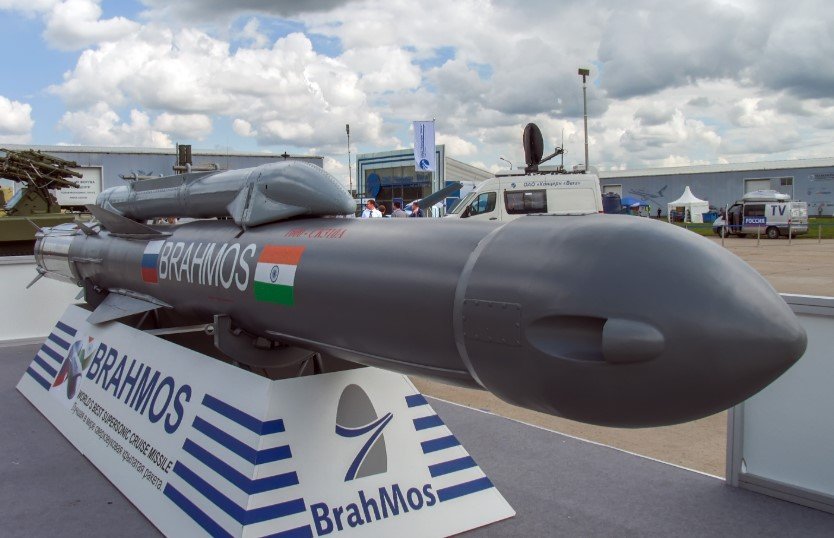After Operation Sindoor, New Delhi sets sights on doubling arms exports by 2029 as battlefield performance impresses global buyers
A short but intense military clash with Pakistan last month has unexpectedly turned into a launchpad for India’s burgeoning defence export ambitions, as global buyers eye indigenous weapons used effectively during Operation Sindoor. With battlefield-tested systems now gaining international attention, the Indian government has announced plans to double arms exports by 2029, capitalizing on the momentum created by the conflict.
At the center of this drive are locally developed missiles, drones, radar systems, and other high-end technologies, many of which were deployed in the four-day skirmish that followed the deadly terror attack in Pahalgam.
From Border Battles to Global Markets
Operation Sindoor was a decisive, high-precision retaliation against Pakistan-based militant infrastructure. It saw extensive use of indigenous platforms — including advanced drones, artillery systems, and the now-iconic BrahMos supersonic missile, jointly developed with Russia. The strikes reportedly targeted multiple Pakistani military sites in PoK and Balochistan.
“When our forces use these systems in real-world combat, and they prove effective in rugged terrain, it’s a seal of approval,” said Vivek Mishra, CEO of drone startup Raphe mPhibr, which recently raised $100 million in funding.

India’s strategy hinges on converting this validation into international sales. Officials from the Ministry of Defence say that inquiries have already come in from Brazil, Egypt, Vietnam, and the Philippines, with a mix of tactical missile systems, UAVs, and radar solutions being showcased.
Fast-Moving Figures
| Defence Export Target | Year | Value (USD) |
|---|---|---|
| Current (2025) | $2.6 billion | |
| Medium-Term (2029) | $5.0 billion | Target Set by Govt |
| Long-Term (2035) | $10 billion | Aspirational Goal |
The $2.6 billion export figure for FY2025 is a record high, already tripling from 2019 levels. But officials say the industry could double that within the next four years, as part of India’s larger push to emerge as a global arms supplier.
What’s Fueling the Fire?
A mix of battlefield proof, geopolitical realignments, and domestic innovation is powering the export surge.
-
Operation Sindoor: Tactical missile strikes and drone swarms seen as effective by foreign observers.
-
Make in India: Government is backing startups and private firms alongside traditional state giants.
-
Shifting Alliances: Nations wary of overdependence on China and Russia are exploring Indian alternatives.
-
Performance in Harsh Terrain: Success in the Himalayas and desert sectors appeals to African and Southeast Asian militaries.
The BrahMos missile, for example, is being evaluated by Brazil, while Southeast Asian nations are showing interest in India’s newly operationalized Astra air-to-air missile.
“It’s not just about showcasing a product, it’s about proving it works when the stakes are real,” said a defence attaché from Southeast Asia currently posted in Delhi.
Who’s Selling What?
India’s emerging defence exporters span from legacy public-sector giants to nimble startups:
-
DRDO: Leading R&D on air defence and missile systems
-
Bharat Electronics Ltd (BEL): Focused on radar and surveillance systems
-
Raphe mPhibr: Drone tech tailored for high-altitude use
-
Tata Advanced Systems and L&T Defence: Focused on land mobility and electronics integration
-
Hindustan Aeronautics Ltd (HAL): Exporting the Tejas Light Combat Aircraft, with deals being negotiated in Latin America and Africa
In fact, HAL has confirmed that at least two countries are in “final-stage discussions” for acquiring Tejas Mark 1A, which also participated in air patrols during Operation Sindoor.
International Push, Domestic Pressure
While the international interest is high, there are voices warning against neglecting domestic needs.
“Let’s not get carried away by export euphoria,” said a former Air Marshal. “We still need to close capability gaps within the armed forces. Export success must not come at the cost of readiness.”
The government appears aware of this balancing act. Officials say export orders will be secondary to Indian military requirements, and only excess production or custom-built variants will be offered abroad.
Parliament Set to Debate
As India’s Monsoon Session kicks off this week, Operation Sindoor and the export strategy are expected to feature prominently. Opposition leaders are likely to demand transparency on how arms contracts are being managed, especially amid reports that private sector players are being fast-tracked for approvals.
Former U.S. President Donald Trump’s recent comment claiming credit for a “behind-the-scenes” role in brokering post-Sindoor ceasefire is also likely to stir debate.
Still, the mood in the Indian defence establishment is optimistic. With a combat-tested narrative and rising manufacturing capacity, India is preparing to sell not just weapons, but confidence.
